Osteoarthritis in the hand can be a real pain! This disease will affect about half of all women and about a quarter of all men in their lifetime before they’re 85 years of age.
We use our hands for nearly every activity we do every day so it is crucial that we understand the symptoms of hand osteoarthritis and what treatments can help.
Let’s start with the basics.
What is hand osteoarthritis?
Osteoarthritis can affect any joint in the body but osteoarthritis of the hand is very common. It is a chronic degenerative disease that affects the tissue of the joint. Most notably, osteoarthritis affects the cartilage or the “cushion” of the joint which causes breakdown and irritation of the joint. Over time, this breakdown of the cartilage can also cause inflammation which can breakdown the other tissue of the joint.
Our hands have over 25 bones in them, forming a number of tiny wrist and hand joints that are susceptible to osteoarthritis.
Osteoarthritis in the hand typically affects 3 parts of the hand:
- Carpometacarpal (CMC) Joint: this is the base of the thumb where the thumb meets the hand joint
- Distal Interphalangeal (DIP) Joint: the joint closest to the fingertip
- Proximal Interphalangeal (PIP) Joint: the middle knuckle joint of the finger
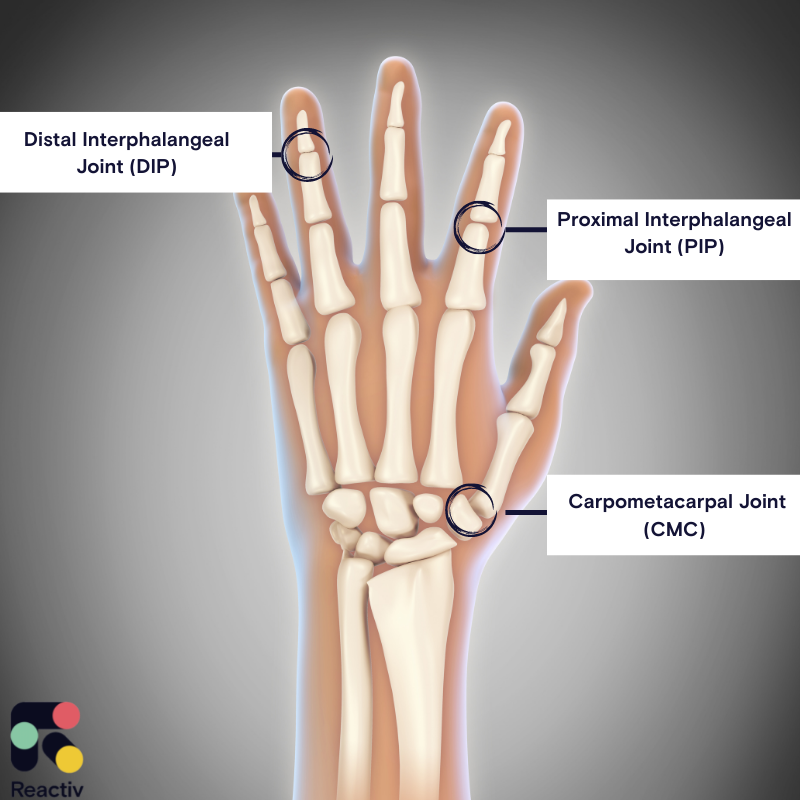
What are the symptoms?
Symptoms of hand arthritis may start gradually and worsen over time. Hand osteoarthritis symptoms may include:
- Nodes/ Bumps
- Redness & Swelling
- Weakness
- Crepitus
- Pain
- Stiffness
We will further describe these symptoms below as we explore potential treatment options.
What are the treatments?
Medications
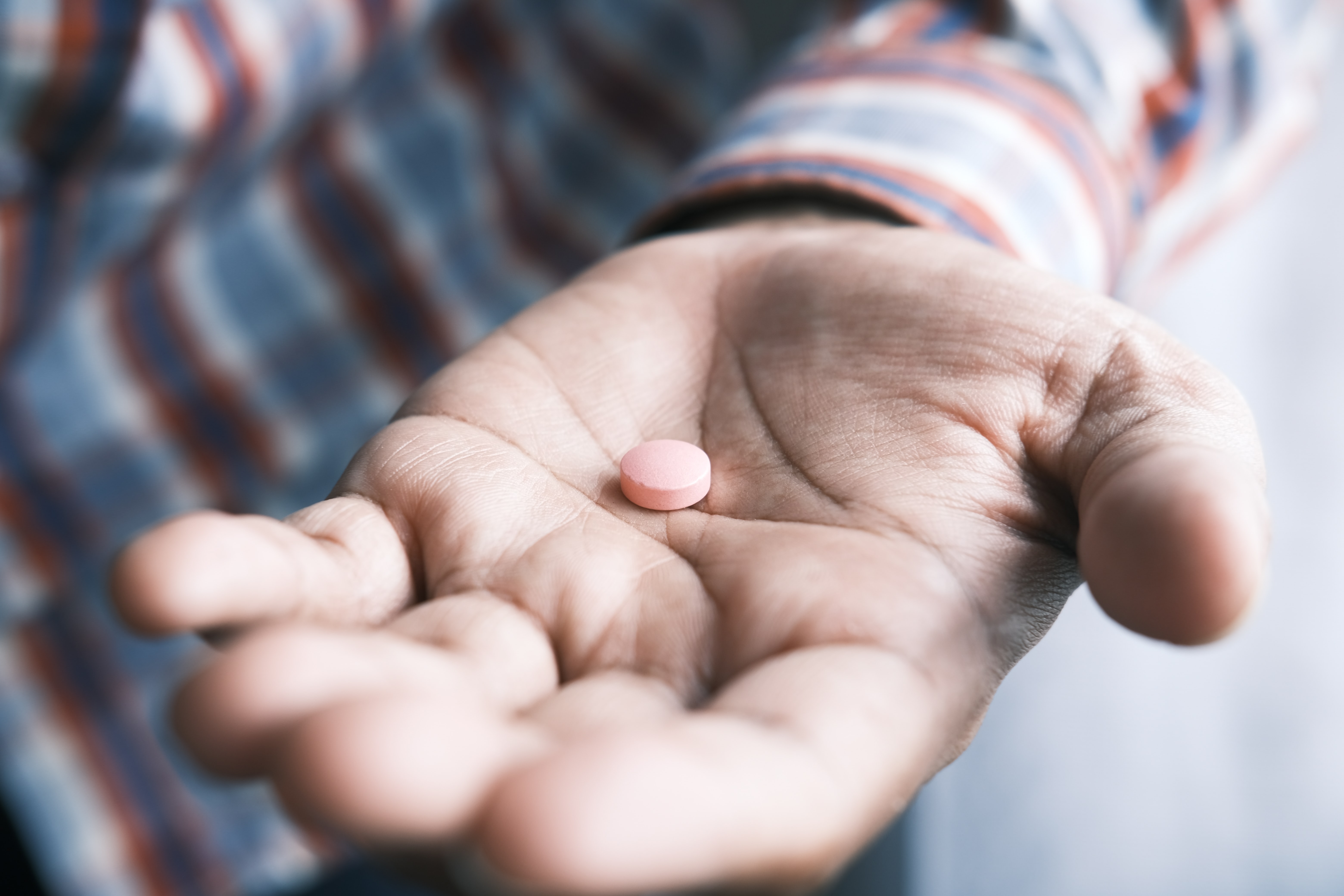
Medication for osteoarthritis includes non steroidal anti-inflammatory drugs (NSAIDs), topical analgesics like Voltaren, steroids, and injections.
Medications for osteoarthritis can be picked up over the counter like NSAIDs and topicals to help reduce hand pain. Other medications like injections and steroids need to be prescribed and even administered by your physician.
Before starting any medication for your condition, you should always consult with your physician as they need to take into consideration your specific condition, disease phase, and medical history.
Natural Remedies
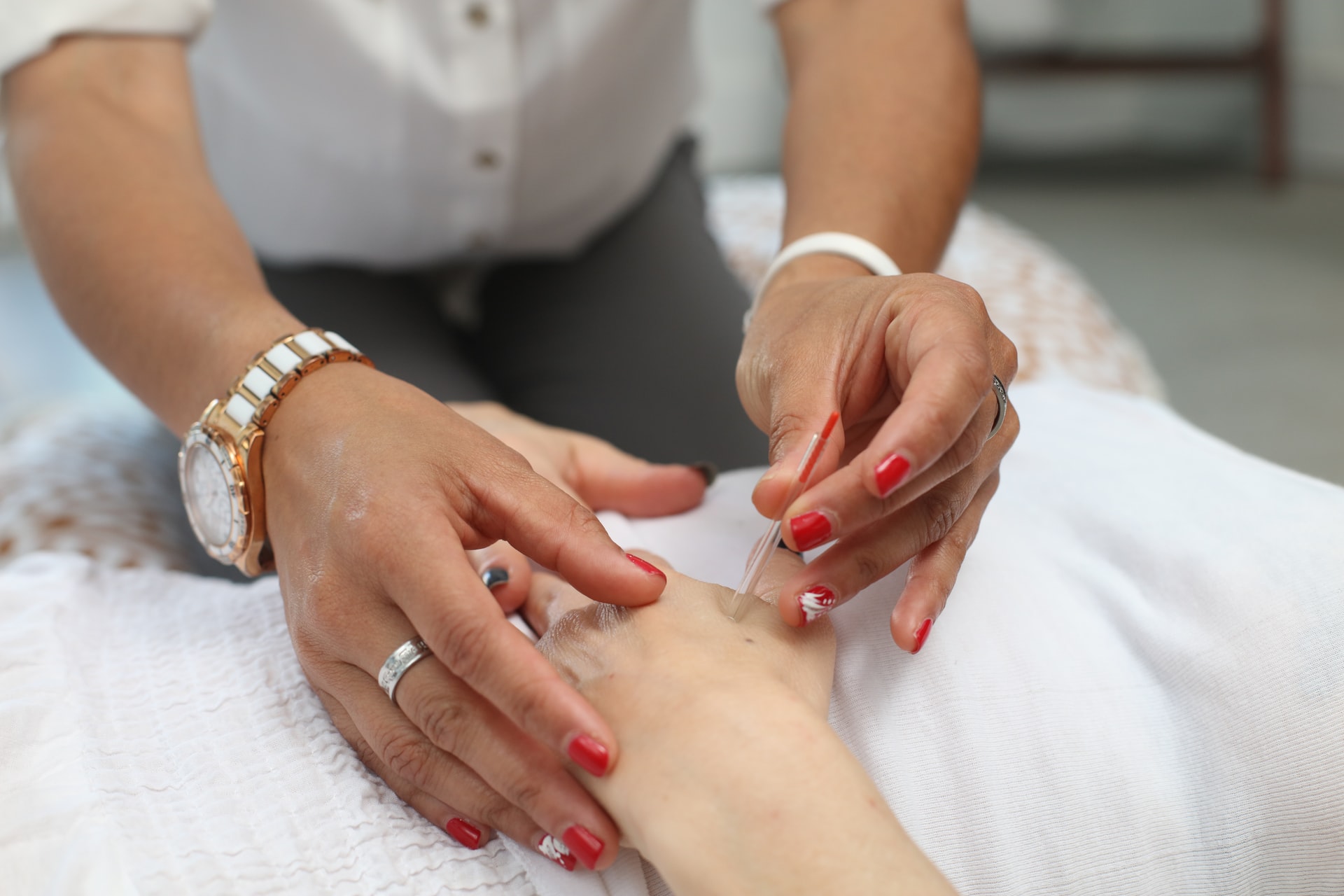
One natural remedy for hand osteoarthritis is thermal modalities which is a fancy word to mean heat and ice. Both of these modalities can be delivered in a number of ways from paraffin wax and warm water baths to ice message and ice packs.
Other natural remedies include the traditional Chinese medicine, acupuncture. During an acupuncture procedure, small needles are inserted into various areas of the body. This is believed to either circulate the Qi, or the positive energy in the body, or stimulate the nerves, muscles, and tendons to produce an analgesic or pain relief effect.
Exercise
Exercise for hand osteoarthritis has been proven to help reduce hand pain and improve overall hand function. Exercises for hand osteoarthritis include range of motion exercises and strengthening the small muscles in the hand surrounding joint to reduce pressure around the hand joints.
Try these 7 daily hand exercises for osteoarthritis.
Splints
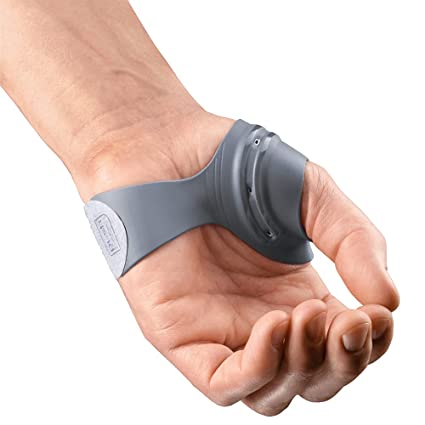
Splints and supports can help for hand osteoarthritis to help reduce the pain. There are a wide variety of hand splints on the market and can be found easily on Amazon or at your local pharmacy.
Splints and supports have a variety of purposes and when worn correctly can help to support the arthritic joint. This helps to reduce the stress through the joint and can help protect the joint long term.
Joint Protection
Joint protection includes a series of principles that can be applied to the activities you do throughout the day. These techniques help to reduce the strain throughout the joints and protect the joint from further damage long term.
The principles include:
- Respecting pain
- Using the stronger/larger joints
- Reducing the effort/force of a task
- Finding balance between rest and activity
- Exercising within a pain free range
- Avoiding positions of deforming throughout the day
Surgery
Surgery for hand osteoarthritis is mostly performed with thumb CMC joint arthritis. This is a type of arthritis that affects the thumb joint that connects the thumb and the wrist.
There are different types of surgeries a physician may offer depending on the severity of arthritis and your lifestyle. Arthrodesis is a surgery that fuses the two joints together leading to improved stability of the joint but as a tradeoff for mobility.
Arthroplasty removes the arthritic joint and replaces it with an artificial joint, this is often done in the fingers at the MCP joint where mobility is essential for hand function.
Which treatments for which symptoms?
Nodes/ Bumps
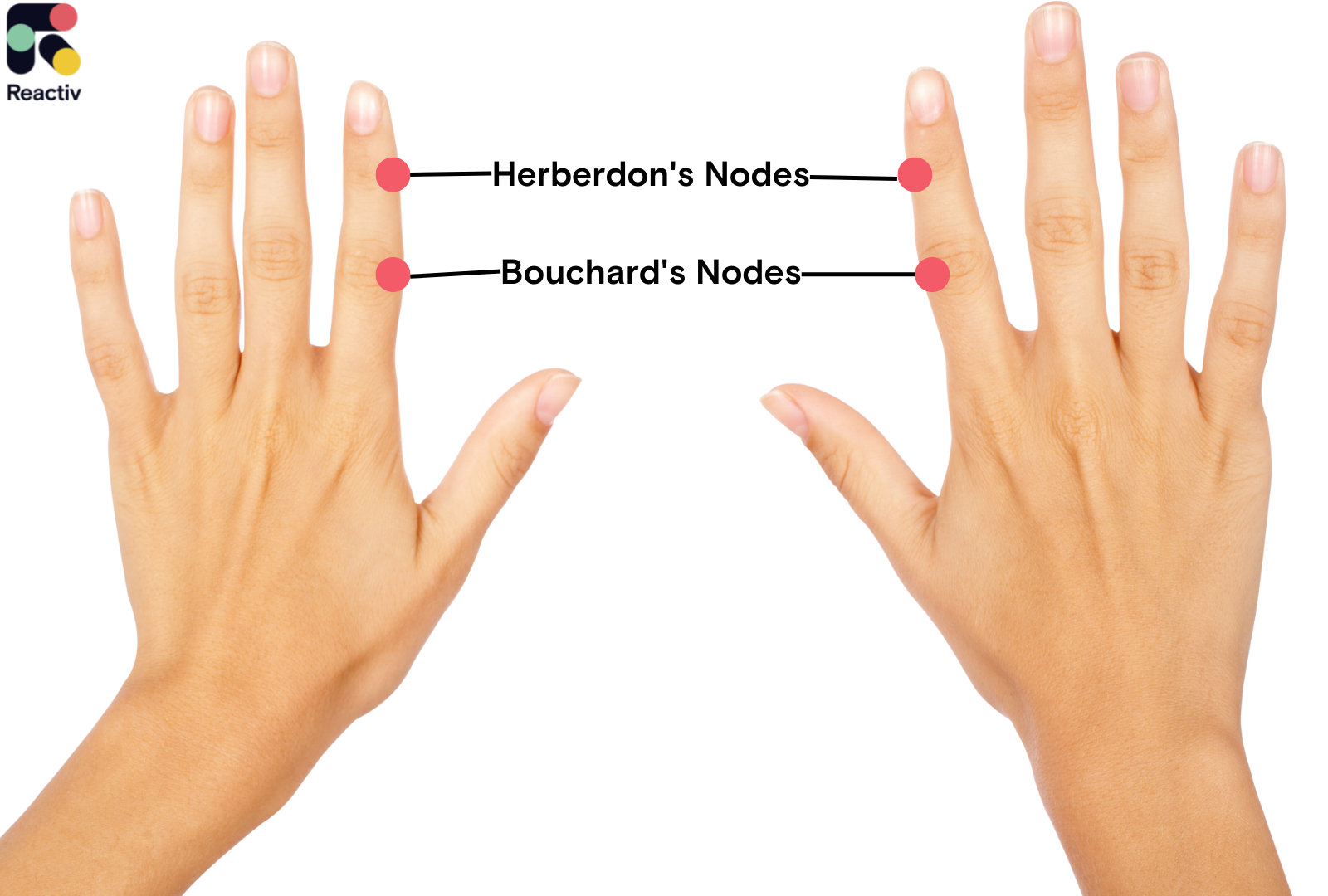
People with hand osteoarthritis often develop bumps on either their DIP joint, the joint closest to the fingertip called Herberden’s nodes, or on their PIP joint, the middle knuckle joint called Bouchard’s nodes.
How exactly they form is often debated. As the cartilage breaks down in the joint, new bone growth happens and forms the nodes. The nodes often aren’t painful to touch but can cause pain and stiffness when bending the fingers.
These are typically a sign of more advanced osteoarthritis in the hands.
What treatment options may help with nodes/bumps?
- Medications: Yes, In severe case
- Natural remedies: Yes, thermal modalities (heat and ice) can help with the symptoms
- Splints: Yes, help protect the joint from further damage
- Joint Protection: Yes, help protect the joint from further damage
- Surgery: In advance cases
Redness & Swelling
In hand osteoarthritis, redness and swelling are signs of inflammation. You may notice redness and swelling around the arthritic joint. The swelling may vary throughout the day and can depend on what activities you’ve done, what you’ve eaten, or even the weather.
What treatment options may help with redness and swelling?
- Medications
- Natural Remedies
- Exercises
- Splint
- Joint protection
- Surgery- Depends, on the cause of the swelling
Weakness
Weakness happens as a symptom of hand osteoarthritis for a number of reasons. Once you begin to feel stiffness and pain in the joint, you slowly stop moving as much. You may also be asking for help more often with tasks such as opening a jar or holding onto objects because they increase your symptoms.
This combination of increased symptoms and decreased physical activity causes weakness in the joints. In the hands, you may notice considerable weakness in the thumb of the hand, especially if your hand arthritis affects the thumb joints.
What treatment options may help with weakness?
- Exercises
- Splint
- Joint protection
Crepitus
Crepitus or sometimes described as joint clicking, grinding, or cracking is a common symptom of hand osteoarthritis. This happens as the joint surfaces grind together and is sometimes coupled with pain but others is painless.
What treatment options may help with crepitus?
- Medications: Depends
- Natural Remedies: Depends
- Exercises: Yes, can strengthen the surrounding muscles
- Splint: Yes, can support the structure
- Joint protection
- Surgery: Depends
Pain
Pain is a very common symptom of hand osteoarthritis. Osteoarthritis pain typically begins as a dull achy pain, as the disease progresses it may advance from the dull ache to a sharp pain.
Pain can be caused by the inflammation surrounding the joint.
What treatment options may help with pain?
- Medication
- Natural remedies
- Exercise
- Splint- Depends
- Joint protection
- Surgery- Depends
Stiffness
Stiffness is a common symptom with osteoarthritis. In osteoarthritis, typically stiffness is worse after periods of inactivity. You may notice this first when you wake up in the morning and as you move about your day the symptoms improve.
What treatment options may help with stiffness?
- Medication
- Natural remedies
- Exercise
- Splint- Depends
- Joint protection
- Surgery- Depends
To recap, here is a table of treatments x symptoms:
Do you have hand osteoarthritis? You may benefit from Reactiv! Reactiv connects you with an occupational therapist who can help provide exercise recommendations, activity modifications, and can help you get back doing the things you love to do.
Reactiv is covered by some insurance plans. To see if you are eligible for Reactiv, provide your contact information and we will reach out.
Disclaimer: This post is for general informational purposes only. It should not be used to self-diagnose and it is not a substitute for a medical exam, cure, treatment, diagnosis, and prescription or recommendation. You should not make any change in your health regimen, exercise regimen, or diet before first consulting a physician and obtaining a medical exam, diagnosis, and recommendation. Reactiv Inc. is not liable or responsible for any advice, course of treatment, diagnosis or any conclusions drawn, services or product you obtain through this post, video, infographic, table, photos, or site.
